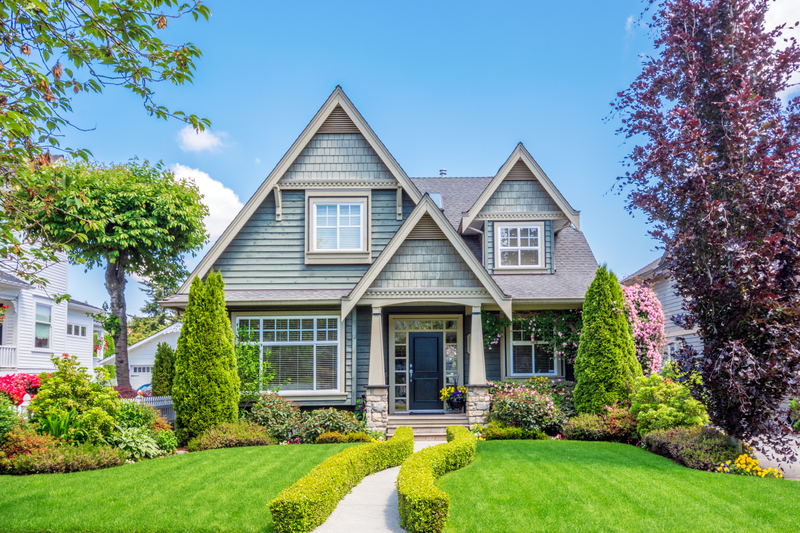
A look at the potential benefits and challenges of rightsizing, plus how it differs from downsizing.
You’re probably familiar with the terms “starter home” and “dream home.” The first is typically a small, affordable home you start with before you grow into a larger home. Eventually, most homeowners downsize, buying a smaller home for later stages in life. But have you heard of rightsizing?
“Rightsizing a home does not define increasing or decreasing the size of your home. You are adjusting your home size to better fit your needs,” says Jessica Duncan, a realtor with Better Homes and Gardens Real Estate Main Street Properties.
Like the name implies, rightsizing is all about finding a home that makes sense for you at a given point in time. “Sometimes, this means you need a larger home or even a home with about the same square footage but a layout that better fits your current lifestyle and needs,” Duncan adds.
In this guide, experts weigh in on how to choose a home while rightsizing.
What Is Rightsizing?
When it comes to rightsizing, the definition is all in the name. It’s about finding a home that is the correct size for your situation.
“Rightsizing is a process of thoughtful discernment, and you can’t start too soon,” says Edward Sattler of the Better Homes & Gardens Real Estate Green Team. “Downsizing is just numbers, big to small, and you might not get what you’d hoped for.”
Unlike downsizing, rightsizing isn’t necessarily about going smaller or less expensive. Agent Michael Yehuda of Coldwell Banker Warburg says downsizing is just a form of rightsizing. “Downsizing is a specific form of rightsizing that emphasizes a reduction in physical space and possessions, often driven by simplification and financial considerations,” he says. “Rightsizing, on the other hand, is a more comprehensive and flexible approach that involves adjusting living conditions to optimize for various aspects of life, including work, health, and family dynamics.”
You might have heard the term simple-sizing being used interchangeably with rightsizing. “Instead of moving to a new home and getting rid of furniture or items that no longer fit in your space, simple-sizing is the idea that you make intentional choices at home to create an easier-to-manage, more contented lifestyle,” says Opendoor Real Estate Broker, Jennifer Patchen.
When Is It Time to Rightsize?
The perfect time to rightsize your home is when you feel your living situation needs to catch up with your lifestyle. “If you are contemplating the decision to rightsize your living space, consider the lifestyle you want and how your new home can facilitate those dreams,” Duncan says.
A 2023 survey by Opendoor shows many Americans are now prioritizing a way of life that leads to simpler living, with less clutter and square footage.
“According to Opendoor’s 2023 survey on simple-sizing, health concerns (57%) became the biggest factor driving their decision to simple-size, which can be especially important for seniors and retirees,” Patchen says.
The benefits of rightsizing can be huge. While it doesn’t always mean saving money, it can mean more freedom. “Rightsizing your home can have a huge emotional impact on your well-being,” Duncan says. “It can reduce stress, free up more time, or even provide a space for everything to create less clutter in your life—all three of these effects can improve your psychological well-being.”
Rightsizing for Retirees
For many, rightsizing comes at the same stage in life as downsizing. Individuals reach a point in later life when they no longer need as much room as they did to raise a family or work from home, for instance.
“Rightsizing for retirees can have many benefits, including lower payments, less maintenance expenses, or just providing a home that fits their current lifestyle,” Duncan says. “Their life has changed in many ways. The kids have moved out of the house, and the need for as many bedrooms may have left with the kids.”
Rightsizing isn’t just about the need for less space. It can also be about a home that requires less attention. “Many retirees dream of traveling more often,” Duncan adds. “Rightsizing to a condo or community that includes yard maintenance, exterior maintenance, and more security over your home while traveling” is attractive.
What to Look for in a Home
As you prepare to look for a home better sized for your needs, consider not just square footage but a range of wishlist items like you might in any home search.
“Think about the location you want to be in, the time you want to spend on maintenance, and your need to achieve these dreams,” Duncan says.
You might decide you want a smaller home within walking distance of shops and restaurants, or maybe your new retirement means you have time to maintain a larger yard or garden.
Sattler suggests considering how a different home might use some of your assets. “How do you want to allocate resources: your time, your money, your emotional and physical and spiritual energies?” he says.
“Consider the benefits of a quieter life: For many buyers, simplifying means moving away from the density of big cities. According to Opendoor’s 2022 Hottest ZIP Codes report, one-third of people across the U.S. said they would relocate for a lifestyle change, whether to be closer to outdoor and recreational activities or to join a close-knit community,” Patchen says.
Similarly, purchasing a smaller home near certain amenities can be an excellent way to rightsize. Patchen says 62% of Americans say they spend more time outside on their property or near various parks following the pandemic.
Kristine Gill, Better Homes & Gardens

